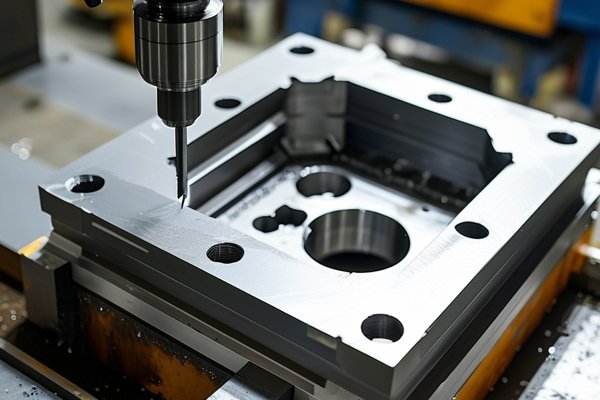In the world of manufacturing and precision engineering, CNC (Computer Numerical Control) machining has transformed the landscape. Did you know that as of 2020, it was estimated that the global CNC machining market would reach $7 billion by 2026, growing at a CAGR (Compound Annual Growth Rate) of 5.7%? This incredible growth signifies the increasing reliance on CNC machining processes in various industries, from aerospace and automotive to medical devices. Understanding the costs associated with CNC machining, and the factors influencing them, has become essential for manufacturers to maintain profitability in a competitive marketplace.
to CNC Machining Costs
CNC machining is a highly versatile manufacturing process that allows for the precise shaping of materials via programmed computer instructions. However, the intricacies involved in producing high-quality parts come with various costs. Accurately analyzing these costs not only helps companies in making informed decisions but also plays a vital role in achieving a sustainable business model.
Understanding CNC machining costs involves several variables, including material costs, labor, equipment, overhead, and various operational factors that can impact pricing. Companies that can analyze these costs effectively will position themselves better for success.
To uncover the true cost of CNC machining, one must dissect the various components that contribute to the total expenditure:
1.1 Material Costs
The choice of material plays a significant role in determining the cost of CNC machining. Different materials exhibit varying properties, and their pricing can fluctuate based on market demand. For example, aerospace-grade aluminum and titanium alloys are often more expensive than standard steels. Understanding the specific material’s cost basis is crucial for accurate cost assessment.
1.2 Labor Costs
Labor costs encompass the expenses related to the workforce involved in the machining process. This includes machinists, engineers, and supervisors. The skill level of the workforce will also impact this cost; highly skilled technicians may command higher wages, but their expertise can lead to enhanced efficiency and lower defect rates.
1.3 Equipment and Maintenance Costs
CNC machines themselves represent a significant investment. The costs associated with purchasing, maintaining, and eventually replacing machinery can have a profound impact on overall spending. Regular maintenance is essential in minimizing downtime and ensuring precision, which can directly affect the cost of production.
1.4 Overhead Costs
Overhead costs are indirect costs that are not directly tied to a specific product but impact the overall operation. This can include utilities, rent, administrative wages, and insurance. Properly distributing these overhead costs across various projects is key to cost analysis.
A variety of factors can influence CNC machining costs; understanding these variables can facilitate deeper insights into cost management:
2.1 Job Complexity
The complexity of the machining job affects not only labor costs but also machine time. More intricate designs typically require additional setup time, specialized tooling, or prolonged machining hours, all of which inflate costs.
2.2 Production Volume
The volume of parts being produced can significantly influence the per-unit cost. For higher volumes, fixed costs can be spread across more units, lowering the individual pricing. Conversely, low-volume production often increases per-unit costs due to higher setup times and inefficiencies.
2.3 Tolerances and Quality Standards
Stringent tolerances and quality standards will inevitably increase the cost of CNC machining processes. Parts requiring tighter precision will necessitate more machine time, specialized tools, and rigorous quality control measures, all of which add to the overall expense.
2.4 Choice of Technology
Different CNC technologies such as milling, turning, electrical discharge machining (EDM), and laser cutting each have their cost profiles. The choice of technology will change based on the material, part geometry, and production volume, impacting labor and operational costs.

To minimize expenditures while maintaining quality, manufacturers should apply strategic cost analysis techniques:
3.1 Cost Estimation Models
Utilize standardized cost estimation models that account for variable factors. By analyzing historical data, production times, and material expenses, companies can create reliable models that yield accurate cost predictions.
3.2 Break Even Analysis
A break-even analysis helps determine at what point profits will cover costs. Knowing the break-even point allows manufacturers to make informed decisions about pricing and production volumes.
3.3 Total Cost of Ownership (TCO)
Consider the Total Cost of Ownership (TCO), which encompasses all costs associated with the acquisition and use of the CNC machinery. This holistic approach provides a clearer picture of long-term expenses and profitability.
3.4 Continuous Improvement
Implement lean manufacturing principles and continuous improvement practices (such as Six Sigma) to identify inefficiencies and reduce waste, further refining the cost analysis process.
To illustrate how accurate cost analysis can lead to increased profitability, let’s explore a hypothetical case study involving ‘Precision Parts Corp.’
4.1 Background
Precision Parts Corp. specializes in high-tolerance aerospace components, often facing tight deadlines and stringent regulations. To maximize profitability in a highly competitive market, they initiated a comprehensive cost analysis project.
4.2 Steps Taken
4.3 Results
Through diligent analysis, Precision Parts Corp achieved an impressive 15% reduction in machining costs in under a year. This not only improved their bottom line but also enhanced their ability to compete for more business in a rapidly evolving market.
In the ever-evolving landscape of CNC machining, thoroughly understanding and analyzing costs is paramount for manufacturers aiming to thrive. By dissecting material, labor, equipment, overhead, and intrinsic factors, companies can better navigate the complexities of cost management. Employing strategic methodologies such as cost estimation models, break-even analysis, and TCO assessments enables manufacturers to make informed decisions that ultimately lead to sustainable practices and increased profitability.
The reality is, the success of a machining company hinges not merely on the quality of its products but also on how effectively it manages costs. The management of CNC machining costs should be viewed as an ongoing journey rather than a one-time exercise. A proactive approach to cost analysis enables brands to adapt to industry fluctuations and position themselves advantageously in the market.
As the CNC machining sector continues its upward growth, the insights provided here can serve as a valuable guide for manufacturers looking to hone their cost analysis techniques. By remaining steadfast in their pursuit of accuracy and efficiency, organizations can pave the way toward long-term success and stability in this highly competitive domain.






